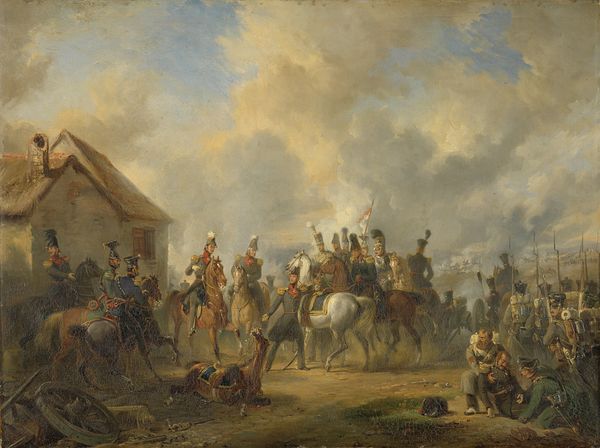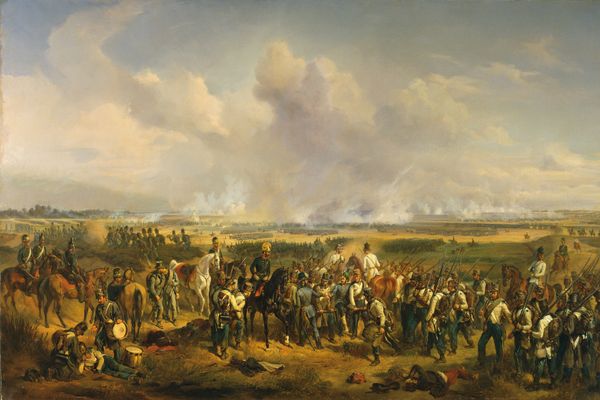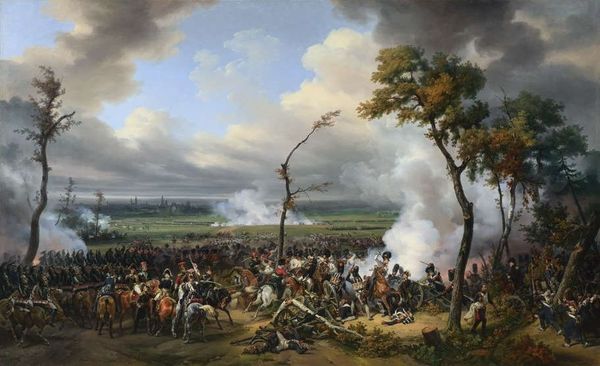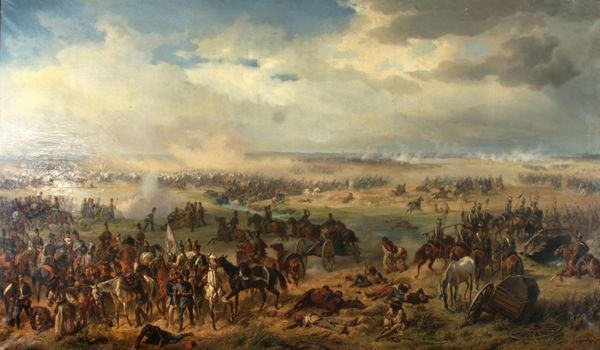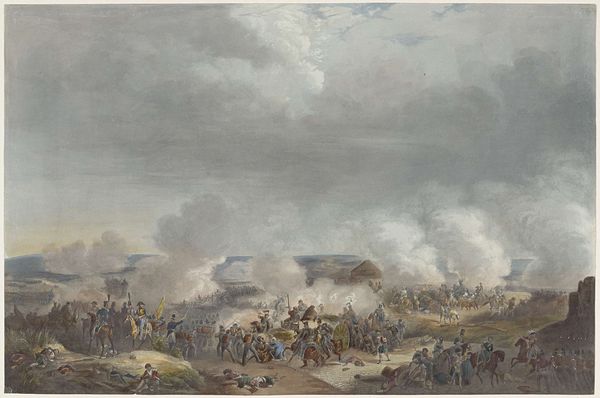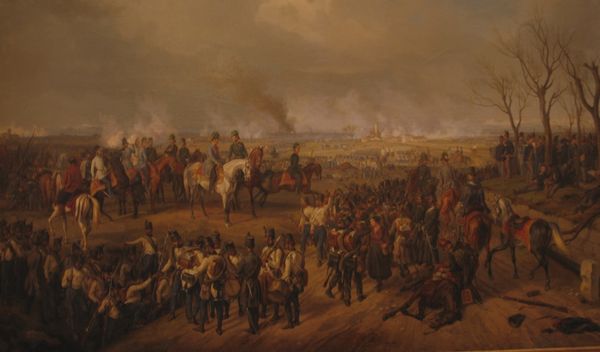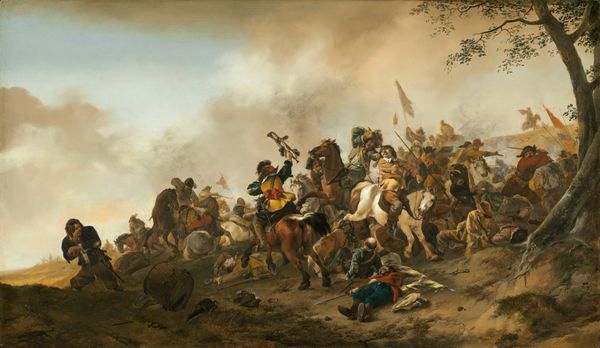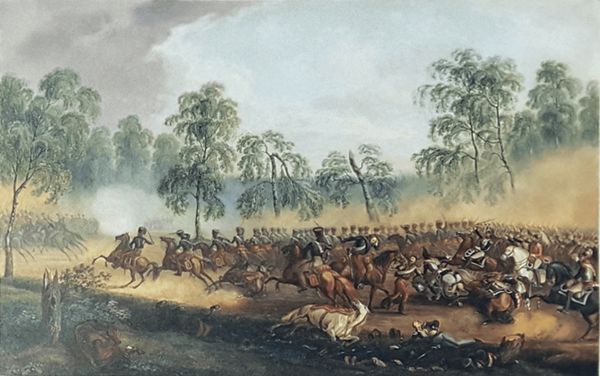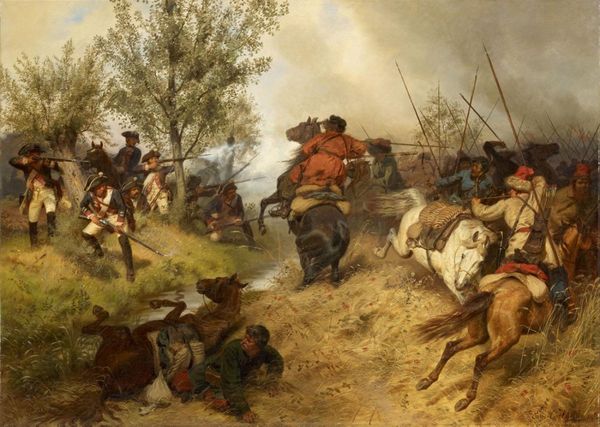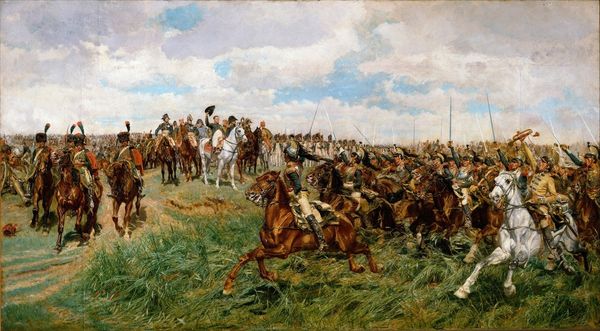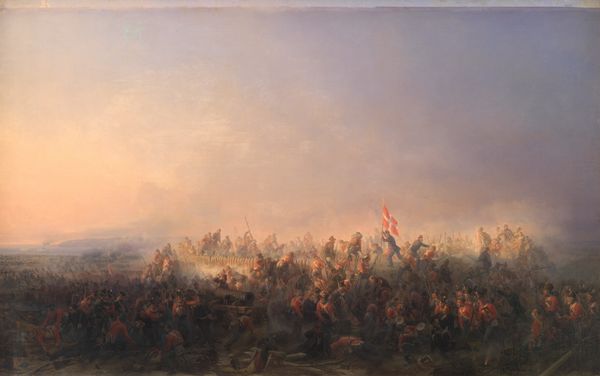
Lord Stirling Leading An Attack Against the British in Order to Buy Time for Other Troops to Retreat at the Battle of Long Island, 1776. 1858
0:00
0:00
painting, oil-paint
#
narrative-art
#
painting
#
oil-paint
#
landscape
#
figuration
#
oil painting
#
history-painting
#
academic-art
#
watercolor
#
realism
Copyright: Public domain
Curator: Alonzo Chappel's 1858 oil painting depicts a scene titled "Lord Stirling Leading An Attack Against the British in Order to Buy Time for Other Troops to Retreat at the Battle of Long Island, 1776." It’s quite a mouthful! What are your initial thoughts? Editor: Chaotic. Visually, it's a scramble, but it effectively communicates the disarray and intensity of battle. There is an almost painterly abstraction created from smoke that obscures the depth and adds to the sensory feeling of warfare. Curator: Indeed. Consider the context: Chappel painted this almost a century after the event. This isn’t just about depicting history; it's about manufacturing a particular vision of heroism and sacrifice, made tangible with paint, canvas, and a market keen for patriotic images. Notice how the supposed valor of Lord Stirling is rendered? The icon of the commanding officer on horseback amid swirling figures. Editor: He certainly stands out, wielding his sword as a visual anchor. It reminds me of similar depictions of figures from antiquity: the hero who’s bravery on the battle field represents the values of the society he comes from. But look at all those red coats, signs of both the British army but also the spilling of blood on the field! How complicit was Chappel with representing both sides on canvas? Curator: Precisely! And think of the materiality of it all. Oil paint allows for these hazy, almost romanticized battle scenes that distance the viewer from the grime and the reality of conflict. Also this work has elements of mass production within it. It shows us how history itself becomes a commodity, created, distributed, and consumed. Editor: Good point. Consider how flags, weapons, and uniforms become recognizable symbols of national identity and the stories associated with them, influencing public memory. Here they have become less about identity and more lost as the detritus of a military conflict that represents only loss. Curator: Exactly. Even the landscape participates in this construction. It’s not about geographical accuracy, but creating an environment that frames the narrative, enhancing the sense of dramatic heroism for viewers willing to buy into a story with particular historical or political meaning. Editor: A good reminder that images are never neutral, that artists also had interests at stake while constructing these images for a specific audience in mind. This has given me a fresh look at not only historical artworks, but also how we come to believe our pasts as a whole. Curator: I agree. Looking closely at its materiality has helped understand it less like a "true" depiction and more as a produced object invested with layers of meaning and consequence for its consumers.
Comments
No comments
Be the first to comment and join the conversation on the ultimate creative platform.
